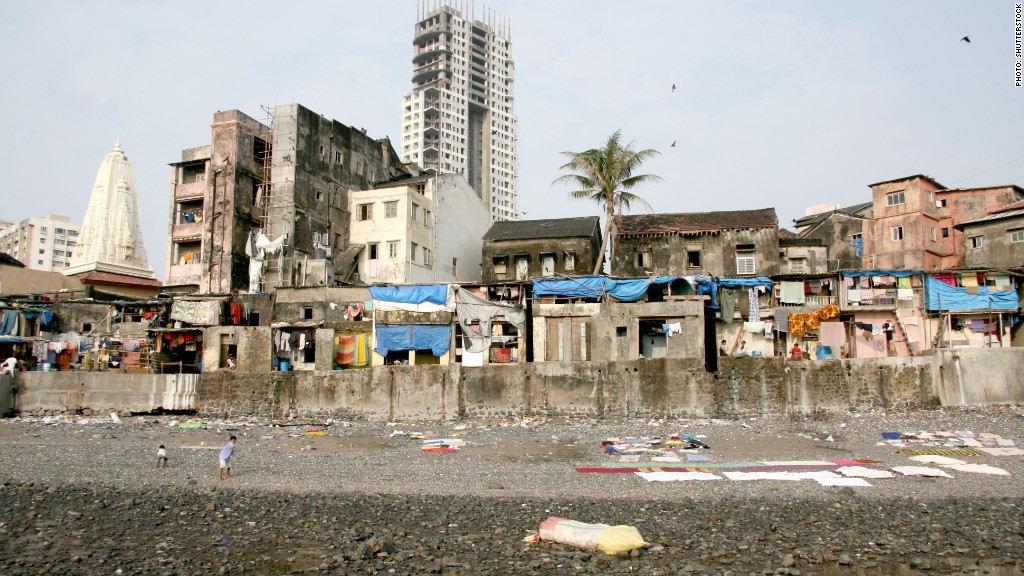
Skyscrapers and shanties, gleaming malls and run-down markets, palatial houses and the piss-poor guys who build them: those are the divides in cities like Mumbai, Nairobi and Manila. Rich and poor do not mingle much.
But a movement's afoot to change that. It aims to integrate the poor into the urban bloodstream, instead of shunting them from sight. For this "inclusive cities" movement, urban renewal doesn't require razing slums and markets. Instead, a world-class city embraces its informal workers, those who work for cash and usually lie outside the tax system, uncounted.
More from Ozy: Extreme food at state fairs
Some shining examples: Bogotá recently incorporated 15,000 informal trash pickers into its municipal rubbish and recycling program. In February, India's parliament passed a law to regulate and protect street vendors, and last year saw the creation of the first worldwide domestic workers union.
The poster child for inclusive-city efforts is Medellín, the Colombian city where a 1,300-foot escalator links hillside shanties with the city's commercial center. Credited with fostering the city's renaissance, the escalator is the centerpiece of a transport network that includes cable cars and trains and a living metaphor besides: a ladder from poverty to economic opportunity.
More from Ozy: Come to the U.S.: Buy a sports arena
The inclusive-cities movement is small but gathering momentum, even as people within it debate what inclusiveness really means. This year's gathering of the UN's World Urban Forum focused on equity in the developing world, while the Fletcher School of Diplomacy's annual inclusiveness forum focused on cities. Grassroots groups and networks have long championed the plight of the informal worker, but recently a glossier benefactor stepped in: finance behemoth MasterCard last year launched a think tank called the Center for Inclusive Growth.
"The success or failure of the human species will be determined in cities," says Yuwa Hedrick-Wong, of the Center, explaining MasterCard's interest in inclusive cities. Rapid urbanization over the past 50 years — with more to come — as well as a sense of growing inequality are to credit for the focus on inclusive cities.
As of 2010, the majority of humankind lives in cities, rather than in rural areas. "Humanity is now an urban species," says Hedrick-Wong. The proportion of city dwellers is rising. It's expected to reach 70 percent by 2050, and most of that urban growth will happen in the developing world.
More from Ozy: Crime that pays well unless you're a woman
Who's building and maintaining the infrastructure in the developing world's megacities? Usually it's informal laborers — construction workers, welders, ditch diggers, trash pickers, domestics and gardeners. (In India, for instance, four out of five workers are in the informal sector.) Many migrate from the countryside, and while the city generally offers them a better income than they had at home, most barely scrape by. Nearly 900 million people lived in urban slums in 2012, according to UN-Habitat.
Which is one reason inequality is on such vivid display in the cities. Just for stability's sake, politics needs to respond to informal workers, observers say: The threat of protests and demonstrations challenging political authority is greater in cities than in the countryside. "The economic growth in cities is rarely inclusive," says Oren Ahoobim, of Dalberg Global Development Advisors, a consultancy. "With the resulting inequality you'll get more people showing up on the streets to advocate for policies that let them tap into that growth— and that's part of what's driving this thinking."
More from Ozy: Me, mom, dad, grandparents all under one roof
"When growth is not broadly shared, it tends not to be sustainable."
The question at the heart of this nascent movement is what it means to include informal workers. Does it require formal sector job creation (not often feasible), or does it allow a "harm-reduction" approach that makes life in the informal sector more bearable?
"It's really a field in the making," says Sally Roever, urban research director of WIEGO, a global network of women in the informal economy. "There just aren't legions of city planners who have a good grasp on how the informal economy works and how it fits in with the formal economy."
For WIEGO and other grassroots groups, inclusion means things like recognizing informal workers, protecting them from displacement and extortion, and providing health and pension benefits. For the World Bank and others, inclusion often means getting informal workers to pay taxes, access loans and participate in the formal consumption market, says Roever.
For Hedrick-Wong, though, it's not either-or. "Actually, it's good for business, too. When growth is not broadly shared, it tends not to be sustainable."
Although inclusiveness is a growing political concern for leaders, it's not without risks, as the case of Bogotá Mayor Gustavo Petro suggests. In 2012, the controversial leftist moved to incorporate the city's informal trash pickers into the official economy, which would reduce its reliance on private collectors. The hand-off was bungled. For three days, mountains of garbage piled up on the city streets. In December 2013, the country's inspector general removed Petro from office and banished him from politics for 15 years, alleging he violated the principles of free competition and threatened public health. Uproar ensued. The Inter-American Commission of Human Rights protested. The man was eventually reinstated, and for the moment, Bogotá's waste-pickers are still on the job.
For now, the movement to redefine the world-class city still has a very long way to go. Markets and slums are still routinely razed, and so far, poor-friendly transit remains rare. Says Ahoobim: "It would be great if we had 10 other examples we could talk about, but we always talk about Medellín."
At least, we suppose, until another city builds a more resplendent ladder from poverty.


